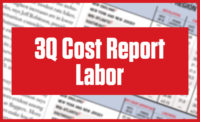...near the end of a project, burnout would act like a referred pain, showing up as symptoms of physical disorders. But the Hong Kong engineers they studied didn’t connect the symptoms to work stress. “They would have a physical disorder and relate it to something else,” Yip points out.
Others, too, have studied the physical toll of construction stress. G. Brent Darnell, an Atlanta-based industry consultant who specializes in leadership and emotional intelligence, writes that many employees “look older than they are and appear beaten down and worn-out.” Frequently, they develop stress-related illnesses such as heart disease, high blood pressure and diabetes. They also depend on nicotine and caffeine to get started and alcohol to wind down, he writes.
In her study, Yip used the Internet to survey 249 engineers employed in Hong Kong. The respondents were mostly men, with an average age of 41. Engineers working for consultants reported suffering less burnout than those employed by contractors at jobsites, she reported; however, according to other employees interviewed, the same employers have similarly overstressed project managers and engineers because of understaffed jobs.
One workforce tactic respondents noted is for companies to squeeze the work of two jobs into one, particularly when the action was not announced publicly. One young engineer working on a higher-education construction project in the eastern U.S., noted that, until recently, the job’s field staff consisted of himself, a senior superintendent and a recently graduated project engineer. But the latter position was eliminated.

“That leaves me to do both the project-manager and project-engineer roles,” says the engineer. “There are lots of people to talk to and lots of issues to be addressed. Plus, I have to do submittals. We worked 12- to 15-hour days, plus weekends,” he says, referring to a nine-month period last year.
Another phenomena this engineer observed could be termed “staffing fade.” “Projects will start out pretty well staffed. But as they go to construction, they’ll cut down to make them more ‘lean,’ which is a big buzzword now,” he says. “So while it may look like we’re saving money, things are actually inefficient because understaffed projects aren’t being carried out as well as they could be.”
The young engineer didn’t sense any concern from his managers. They “know we’re overworked, but they don’t do anything,” he continued. “You’re drained physically, you’re frustrated and a little bit angry. You get into a cycle where the job becomes a burden. You get up in the morning with no motivation to go into the office.”
On-the-Job Risk and Reward
Not all industry employees feel exploited. Sometimes the unending grind is voluntary, overtly appreciated and often rewarded by management.
“When we are busy, I can work up to 80 hours per week,” a chief estimator for a small to medium-sized company wrote in a blog-post reply. The respondent noted that he also serves as company project manager. “Even when I come home from work and on weekends, I find myself searching the Internet for new leads and new opportunities for my company. I treat my job like it’s my own business, and I think (and hope) my boss sees this.”
The estimator adds that he “knows [the company’s] profit margins. I also know that I’m currently doing at least...




Post a comment to this article
Report Abusive Comment